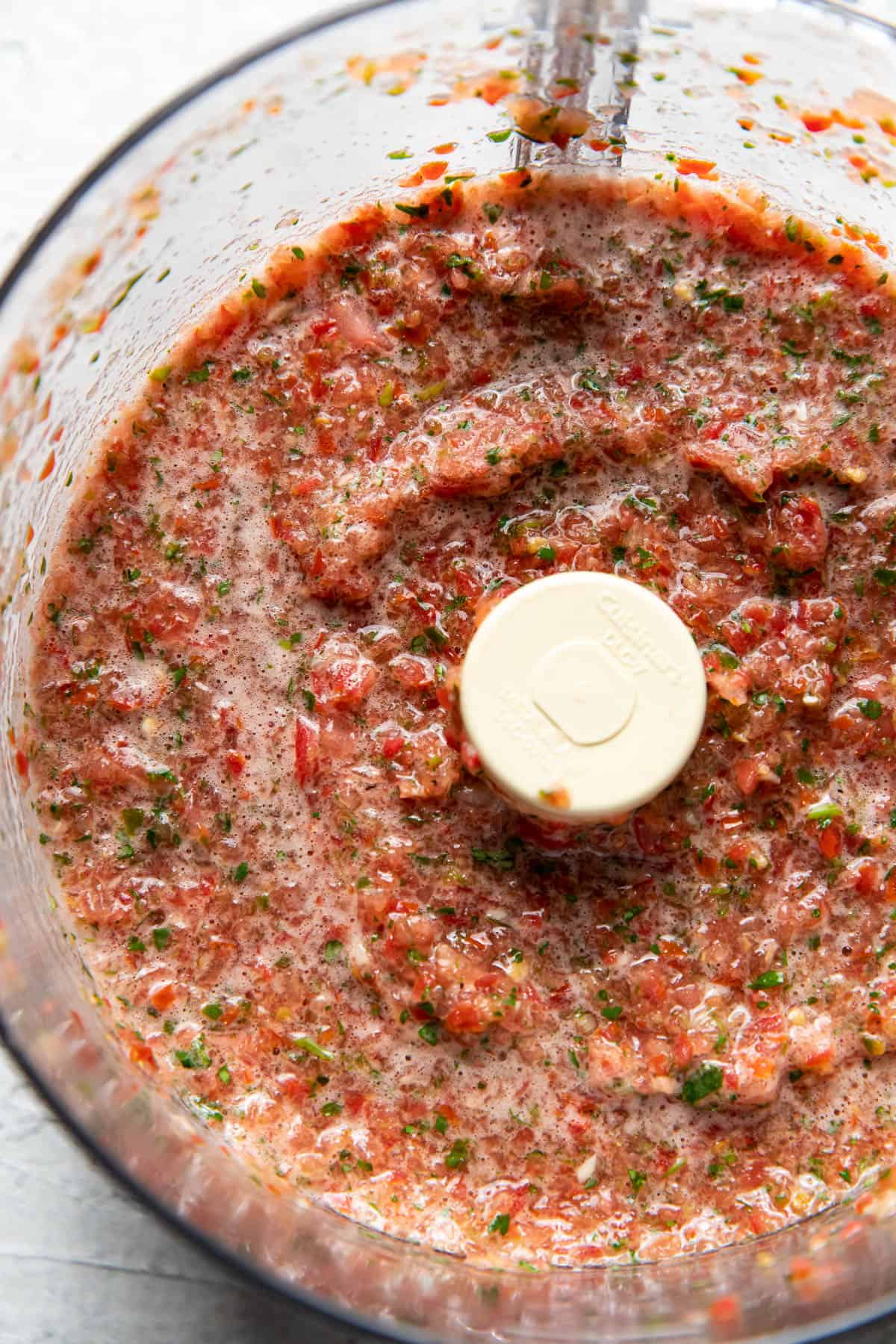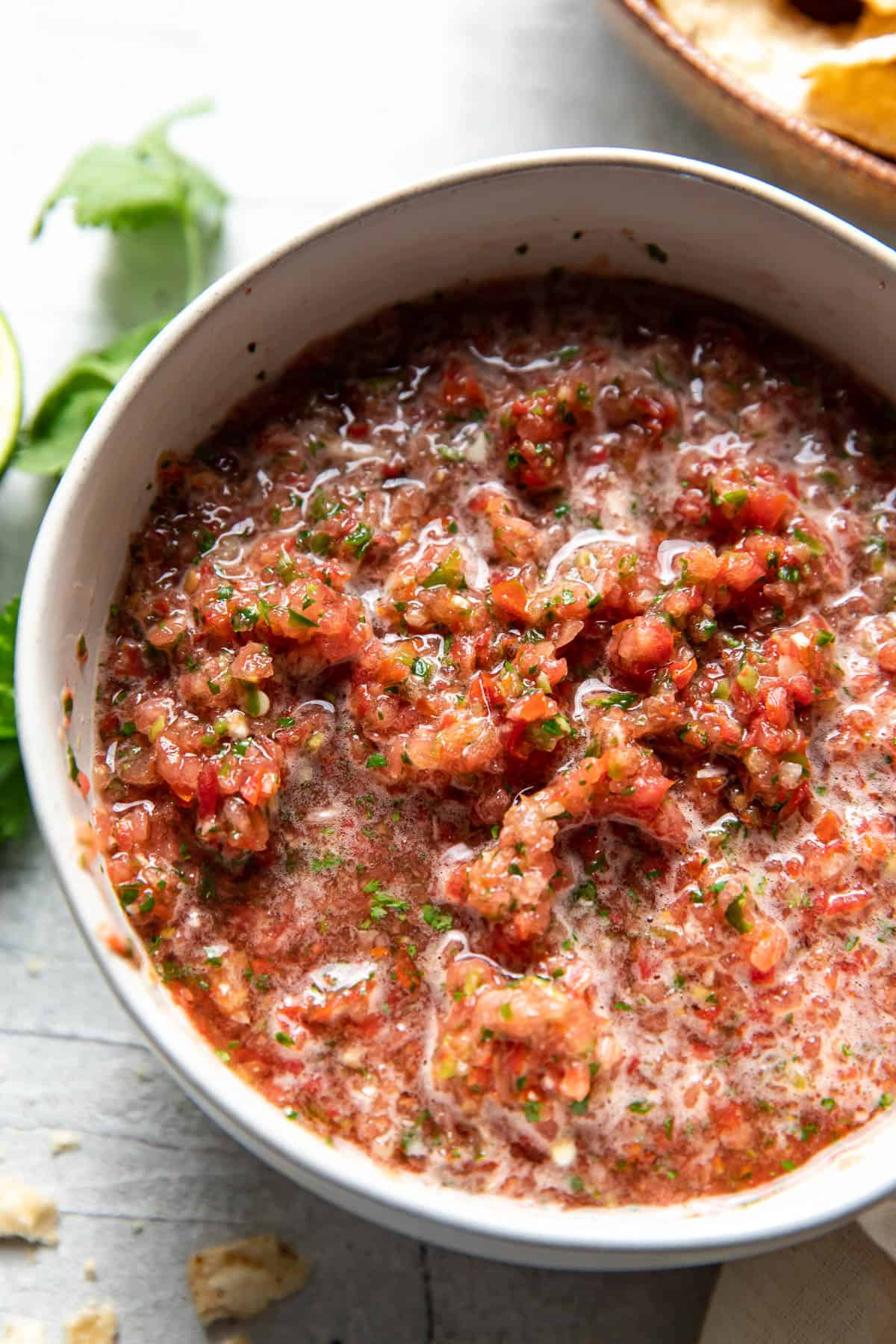Salsa fresca, also known as pico de gallo, is a vibrant and flavorful condiment that adds a zesty kick to various dishes. Originating from Mexico, this fresh salsa is a staple in Mexican cuisine and has gained immense popularity worldwide.
Ingredients of Salsa Fresca
The beauty of salsa fresca lies in its simplicity and the use of fresh, high-quality ingredients. The core components of salsa fresca include:
-
Tomatoes: Ripe, juicy tomatoes form the base of salsa fresca, providing a sweet and tangy foundation.
-
Onions: White or red onions add a sharp and aromatic flavor to the salsa.
-
Cilantro: Fresh cilantro leaves bring a herbaceous and citrusy note, balancing the flavors.
-
Chiles: Jalapeño or serrano peppers add varying degrees of heat, depending on your preference.
-
Lime Juice: Freshly squeezed lime juice brightens the salsa, adding acidity and enhancing the other flavors.
-
Salt: A touch of salt enhances the overall taste and balances the sweetness of the tomatoes.
Variations of Salsa Fresca
While the core ingredients remain the same, salsa fresca offers room for creativity and personal preferences. Some popular variations include:
-
Roasted Salsa Fresca: Roasting the tomatoes and onions before chopping adds a smoky and caramelized flavor.
-
Fruit Salsa Fresca: Incorporating fruits like mango, pineapple, or peaches adds a tropical twist to the salsa.
-
Spicy Salsa Fresca: Using hotter peppers, such as habaneros or cayenne, creates a fiery and intense salsa.
Health Benefits of Salsa Fresca
Beyond its culinary appeal, salsa fresca is also a nutritious addition to your diet:
-
Rich in Vitamins and Minerals: Tomatoes, onions, and cilantro are packed with vitamins A, C, and K, as well as minerals like potassium and iron.
-
Low in Calories: Salsa fresca is a low-calorie condiment, making it a guilt-free way to add flavor to your meals.
-
Supports Heart Health: The antioxidants in tomatoes have been linked to reducing the risk of heart disease.
Serving Suggestions for Salsa Fresca
Salsa fresca is a versatile condiment that complements a wide range of dishes:
-
Tacos and Burritos: A dollop of salsa fresca adds a burst of flavor to tacos, burritos, and other Mexican dishes.
-
Nachos and Quesadillas: Salsa fresca is the perfect dipping sauce for nachos and quesadillas, providing a tangy and refreshing contrast.
-
Grilled Meats and Fish: Salsa fresca adds a zesty flavor to grilled meats, fish, and poultry.
-
Salads and Soups: Salsa fresca can brighten up salads and add a spicy kick to soups.
-
As a Dip: Salsa fresca is a delicious dip for tortilla chips, vegetable crudités, or crackers.
Salsa fresca is a vibrant, flavorful, and healthy condiment that adds a touch of Mexican zest to any dish. With its simple ingredients and endless variations, salsa fresca is a versatile culinary staple that will elevate your meals and tantalize your taste buds.
Chilling and Shelf Life
When salsa is allowed to sit and develop its flavors for a day or two, it always tastes better. This can be eaten immediately, but if you have time, it tastes best after being refrigerated for a day.
Store this salsa in the refrigerator for up to one week.
It never lasts very long because I’m always eating so much delicious food. Like these chicken street tacos and skillet enchiladas. Yum!.
How to Make Salsa Fresca
Making salsa fresca couldnt be any simpler!
Using ripe tomatoes is my number one recommendation for making the best, most delicious-tasting salsa possible. If they’re not ripe, your salsa won’t taste very flavorful. So again, use ripe tomatoes.
Before using any fresh produce, make sure to wash it all.
Before putting the tomatoes in the food processor, I like to quarter them.
Be careful to remove the seeds from one serrano pepper, leaving the seeds in the other for added flavor.
Add the tomatoes, chopped green onions (stems removed), lime and lemon juice, cilantro, minced garlic, serrano peppers, and salt to the food processor. Pulse everything together. It’s up to you whether you want the salsa to be chunky or thin. I like mine somewhere in the middle.


The BEST Mexican Restaurant SALSA ROJA Recipe (+ the secret ingredient)
FAQ
What’s the difference between salsa and salsa fresca?
Is salsa fresca the same as Pico?
Why is salsa fresca called pico de gallo?
What are the best tomatoes for salsa fresca?
How do you make salsa fresca?
Here’s how to make salsa fresca: Chop and remove the core from the ripe tomatoes. In a food processor, blend tomatoes, white onion, garlic, cilantro, and jalapeño peppers (with the seeds removed for a mild salsa). Add the tomatoes, cumin, lime, and salt, and process until a uniform texture forms. Strain to remove extra liquid, then discard.
What is salsa fresca?
Salsa fresca, also known as pico de gallo, is a fresh and vibrant Mexican salsa made with simple, classic Mexican ingredients. The best part? It’s incredibly easy to make! Just chop, mix, and let the flavors meld for a delicious homemade dip that’s perfect for any occasion. I enjoy making new salsa recipes.
What does salsa fresca taste like?
Each bite will burst with the flavor of classic Mexican spices, sweet ripe tomatoes, onions, garlic, jalapenos, cilantro, and zesty lime juice. This post may contain affiliate links. Thanks for supporting small business. Salsa fresca, also known as pico de gallo, is a fresh and vibrant Mexican salsa made with simple, classic Mexican ingredients.
Is salsa fresca the same as Pico de gallo?
Salsa fresca vs pico de gallo: same or different? The salsa fresca definition is a sauce made with raw tomato, onion, cilantro, jalapeño, and lime. And the definition for pico de gallo is…pretty much the same thing. Many sources contend that salsa fresca and pico de gallo are two words for the same thing.
